We’ll see you in there.
Connect to customize your food & drink discovery.
By signing up you agree to our Terms of Service and Privacy Policy.
Japanese
Sushi Gin
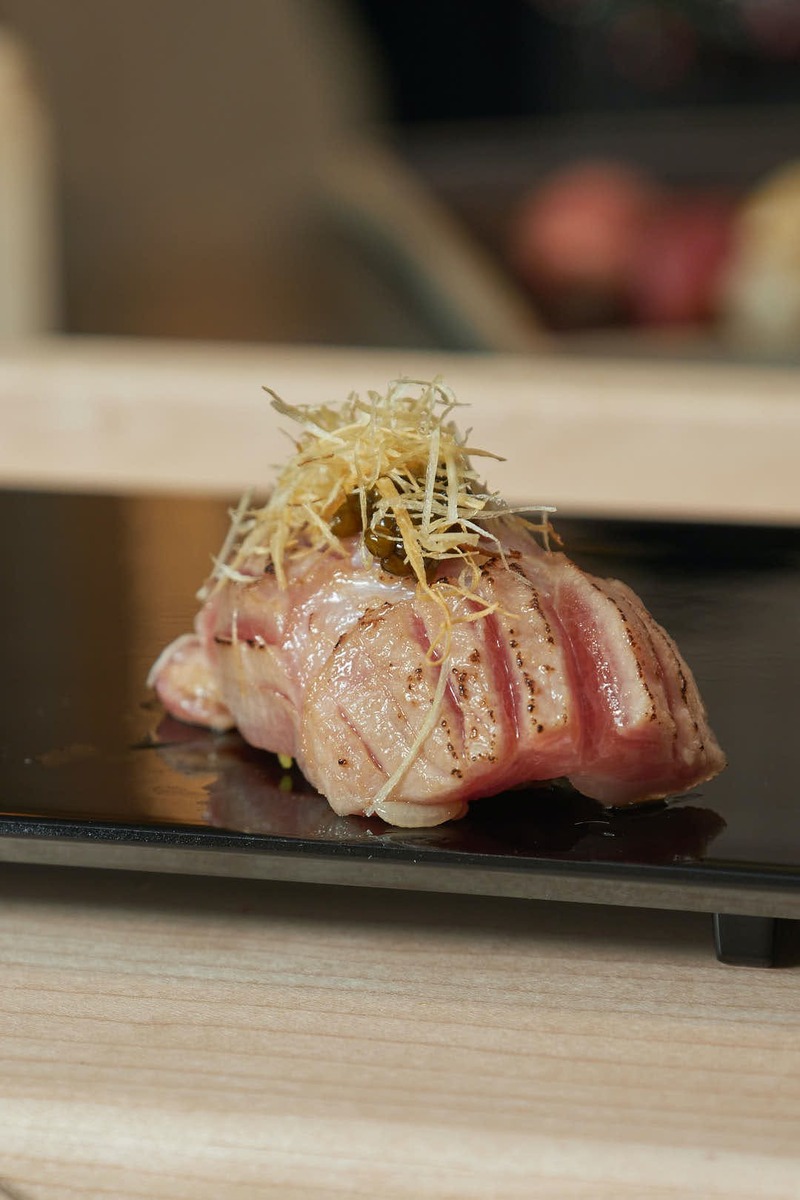
If you want some indication of how fresh the fish and seafood is at Sushi Gin, consider this:
Soon after our arrival (before official opening hours), a large package was delivered – from Japan. Upon opening, the contents were revealed to be two fist-sized crabs.
These weren’t just any old crabs. These were kegani, or hairy crabs (yes, with fuzzy brown bristles on their legs). They were also still very much alive and kicking. In fact, seemingly none the worse for wear after their long flight in cargo, the pair of them began (crab-)walking along the polished blonde wooden bar that dominates Sushi Gin’s dining room, wrapping itself like an L around the station where a trio of sushi chefs – head chef Wesley Ng, Henry Zhang and Bryden Ng – execute their slicing, blowtorching and arranging with art and precision.

It was Wesley that informed us that the kegani in question are from Hokkaido, and that their meat, dense, firm and sweet, is so coveted that a single crab retails, wholesale, for upwards of $200 in Canada. He estimates that the succulent flesh from a single kegani is enough to make 10 individual nigiris. You do the math.
Math is inevitably on diners’ minds when they contemplate dining on sushi and sashimi. You want exceptional quality when it comes to the ingredients and exquisite mastery when it comes to the chef. But you also don’t want to break the bank. This is especially the case when it comes to omakase – Japanese for “I leave it up to you” – in which you give the sushi chef carte blanche to prepare top-quality fish in a signature style that emphasizes both technique and creativity.
Sushi Gin’s owner, “P”, is aware of the math. He’s aware that Toronto is home to some very refined, very Michelin-starred, very expensive omakase restaurants. He’s also aware that it’s also home to some cheaper options where wallet-friendly prices come at the expense of quality. But what if he could pull off a seemingly impossible feat: serving top-quality sushi at a more reasonable (i.e. not astronomical) price?
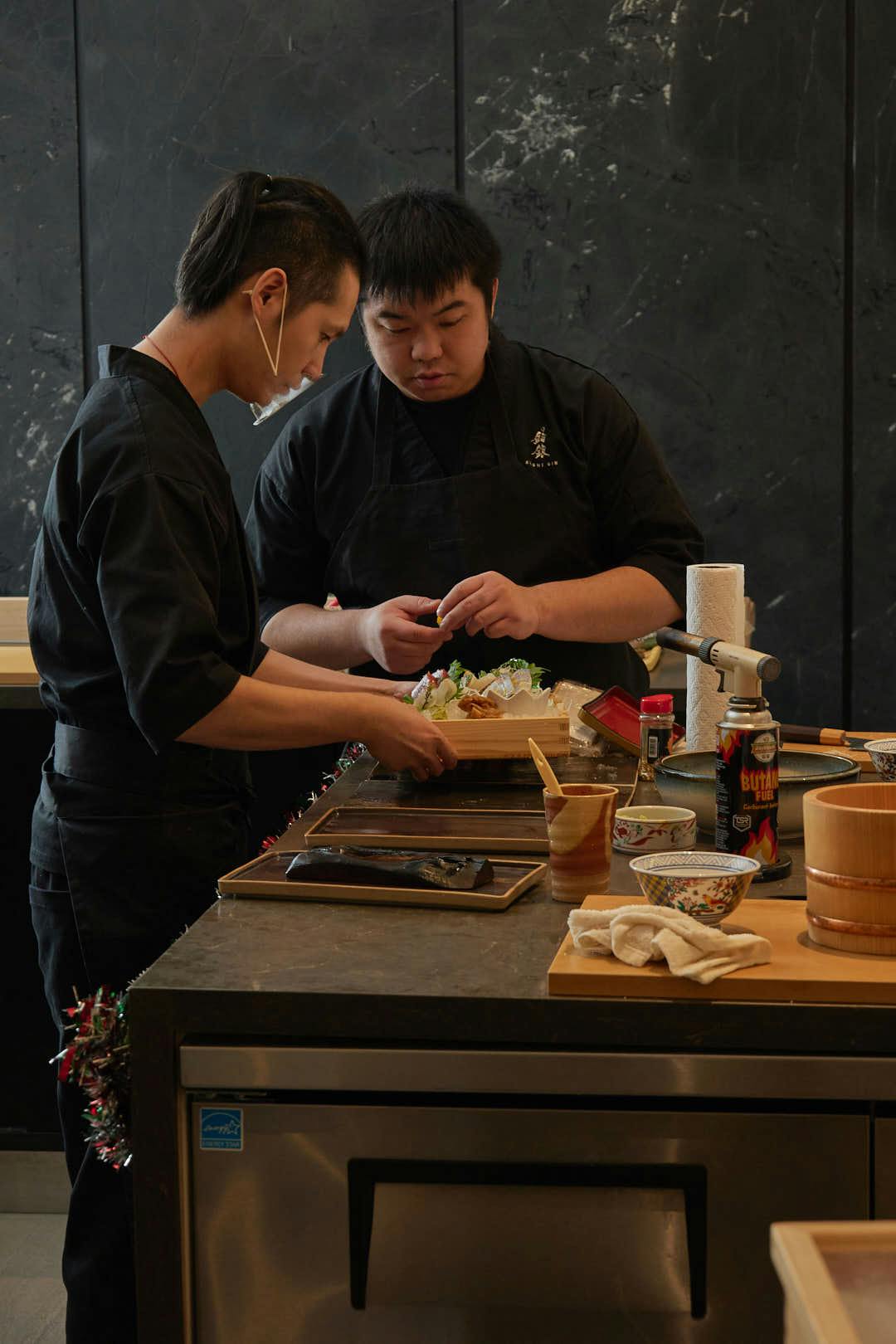
An aficionado of Japanese food and culture as well as an avid gamer – the name “Sushi Gin” pays homage to a restaurant featured in one of his favourite video games, Yakuza (Like a Dragon) – “P” felt up to the challenge.
“Most sushi restaurants serving omakase focus on profits. They offer high-end cuisine and have very thick margins due to large mark-ups,” he explains. “My focus is on being able to offer the same ingredients, and techniques, but with more value. I’m motivated less by making money than by a deep passion for Japanese cuisine and a genuine love for the artistry involved in sushi preparation.”
Located in a Markham strip mall, Sushi Gin’s spare yet soothing interior is markedly casual. When seated comfortably at the bar – with room for 18 diners at a time (reservations are recommended) – there are no decorative distractions. Instead, the focus for diners is very much on the riveting, exacting performance of the three chefs.
The menu offers plenty of appetizers – edamame, gyoza, karaage, tempura – as well as several udons and various dons. But the majority of diners are lured by the impressively fresh fish, 90 percent of it assiduously sourced from Japanese suppliers and flown in on a daily basis (for this reason offerings change frequently, based on seasonality and availability).
Both sashimi and sushi come in simple and deluxe sets. The latter are accompanied by miso soup, rice, chawanmushi, tempura, mixed green salad, and delicately battered and fried morsels of chicken and fish.
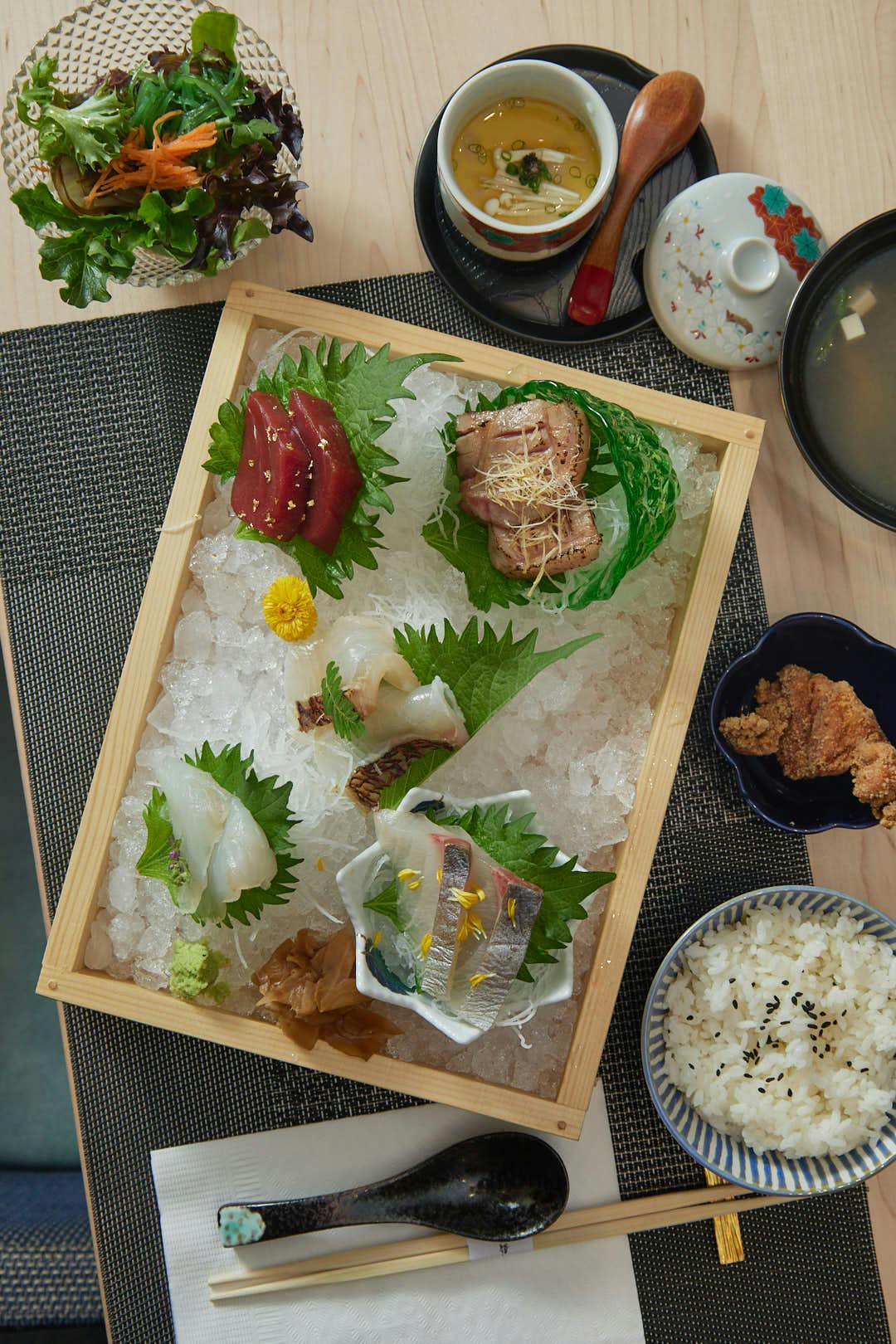
Handsomely arrayed in a wooden box, the Deluxe Sashimi Set features a quintet of exquisitely carved fish. There’s mild and delicate pearly white hirame (large-tooth flounder), light and buttery rose-flecked shimaaji (striped jack) and madai (Japanese sea bream), whose firm flesh releases a clean but subtle sweetness. Tuna fans will delight in the rich presence of chutoro (taken from a part of the fatty underbelly so small that one fish yields just enough for a single sashimi) and akami, its red flesh lean and meaty.
Many of the same fish also appear in the Deluxe Sushi Set. But you’ll also be treated to crimson-skinned, umami-packed kinmedai (golden eye snapper) and sawara (Spanish mackerel), described by one web site as the “sushi equivalent of a startup that rocketed to IPO superstardom”. The six nigiri come artfully arranged on a miniature yet grandiose wooden staircase. Adornments range from vibrant purple shiso blossoms and diced green scallions to glistening orange roe and flecks of gold leaf. A negi toro maki, featuring tuna and green onion rolled in nori, completes the offerings.
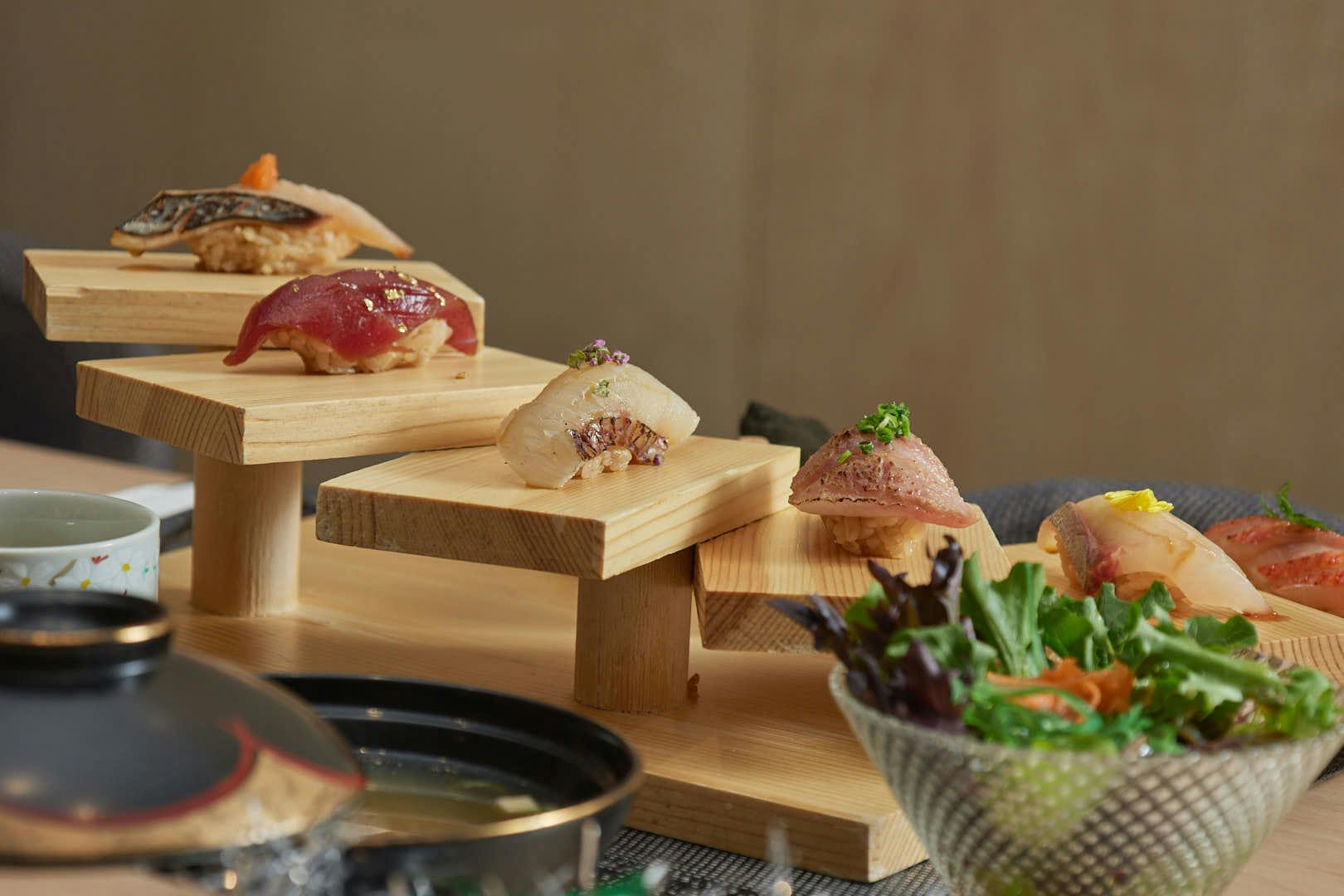
As elaborate as the sushi and sashimi sets may be, they’re nothing compared to the extravaganza of the omakase menu.
For $170 per person, Sushi Gin’s Omakase consists of the following: a pair of appetizers; miso soup, tempura, temaki, tamago (rolled omelette), three sashimi, ten pieces of nigiri sushi, and dessert (fresh fruit or mochi).
First to arrive, the appetizers impress with their beautiful presentation, each in a shimmering, iridescent bowl redolent of their oceanic origins.
Floating gently in a pool of miso, the flame-seared scallops are lusciously plump with just the right degree of firmness. A sprinkling of grilled scallions and umami-packed bonito flakes add vivid colour and zing.

Channelling a rich morsel of foie gras, the ankimo – a traditional delicacy of monkfish liver that is rubbed with salt and rinsed in sake before being steamed to perfection – arrives in the form of a thick tawny round. Bathed in a citrusy ponzu sauce, it’s topped with roe and scallions and a confetti of gold leaf.
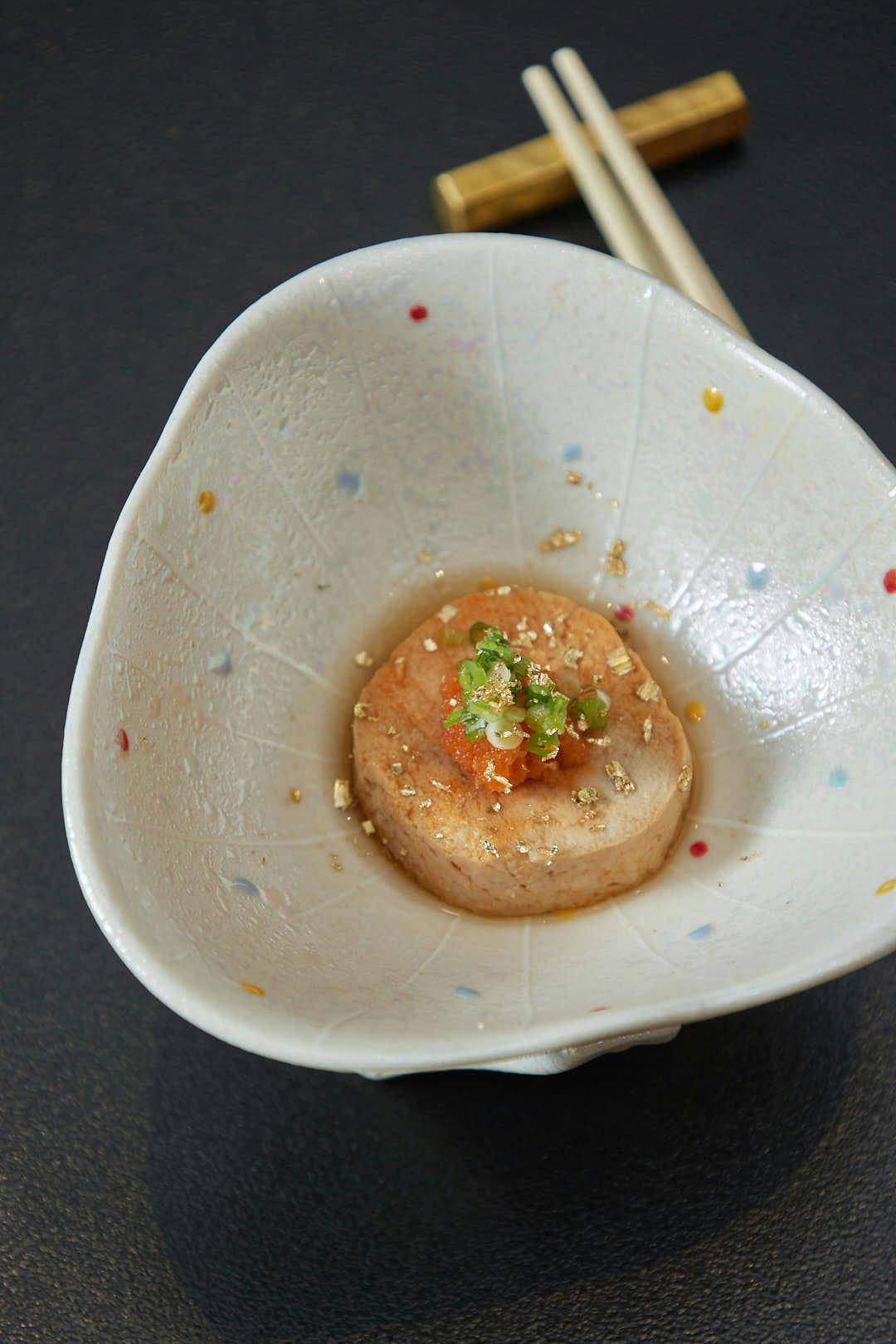
No less beguiling is the minimalist bowl of tempura, consisting of a daintily-battered spear of green okra snuggled cozily against a thick curl of golden sea bream. Yet another bowl contains chawanmushi, egg steamed to a cloud-like custard, swimming in a broth of Dashi, soy sauce and mirin, and topped with truffles.

The sashimi plate features a trio that straddles sweet, salty and smoky, the flavours and textures playing off each other with virtuosity. On the sweet end of the spectrum is the amaebi, or sweet shrimp, a crustacean that famously changes its gender, beginning life as a male before morphing into a female. Served pure and unadorned, this shrimp does ample justice to its English name, surrendering an intensity of fresh, Pacific sweetness when you bite into its succulent flesh.
Equally alluring is the finely marbled hunk of Wagyu A5 beef (the highest quality grade for this already ultra-high quality variety of Japanese beef). Delicately seared, its rich, buttery notes spill out of flesh that is almost absurdly tender. Although there are four breeds of Wagyu cattle, Sushi Gin imports top-of-the-line Hida beef, whose extra-fine mesh of marbling accounts for its unparalleled juiciness.
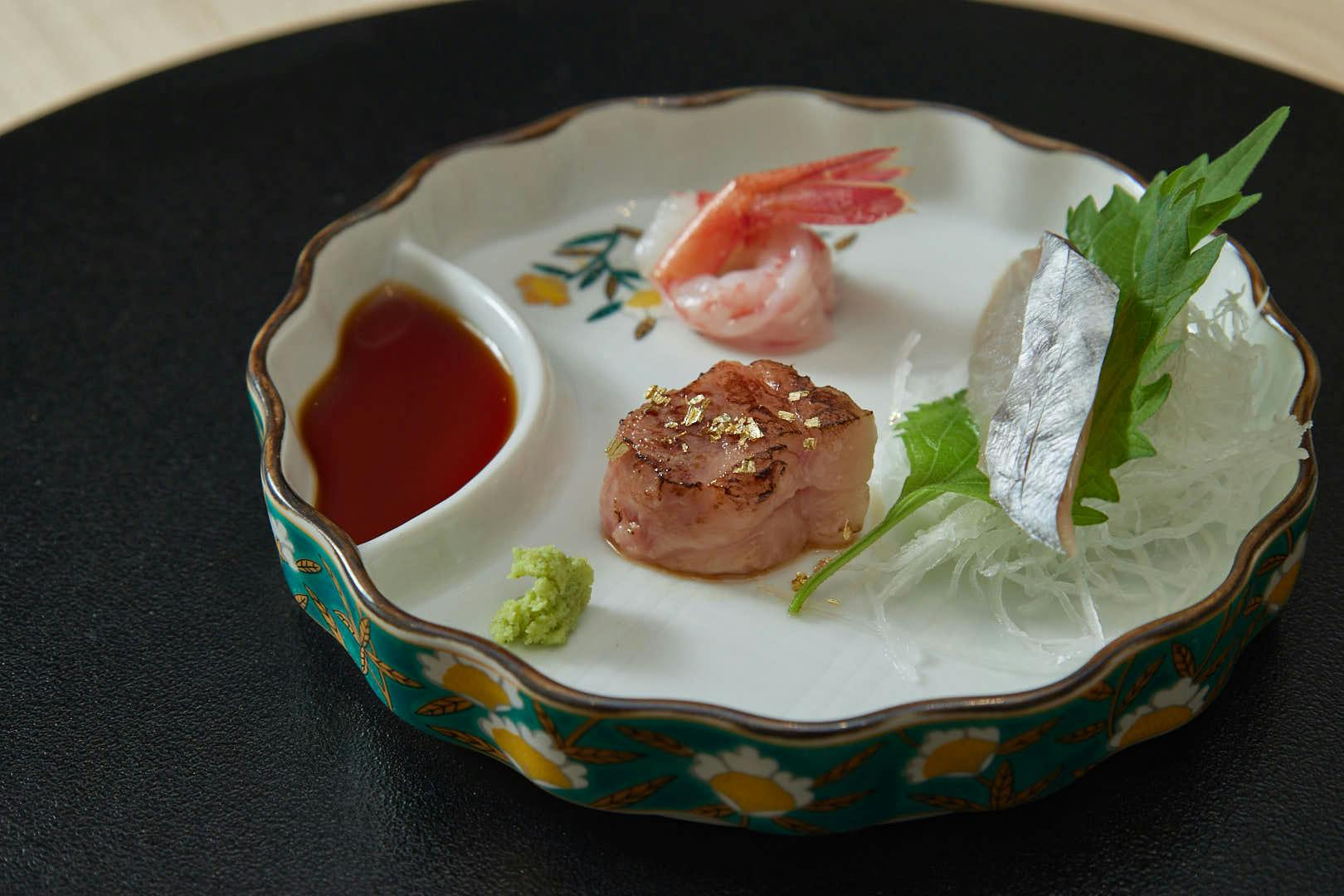
Rounding out this tempting triumvirate is the smoked sawara, silver skinned Spanish mackerel whose soft, snow-white flesh’s natural umami notes are deepened via smoking. It makes for an ideal segue into the extravagant platter of sushi that arrives like a smashed open box of treasures, as fresh and glittering as if they’d just been rescued from the bottom of the sea.
Among the shimmery jewels here are nodoguru, blackthroat sea perch, its pearly flesh brimming with umami-spiked fat and wonderfully firm mirugai, the (increasingly rare) giant clam whose milk-white neck, slightly sweet, gives off faint, yet lingering notes of seaweed.
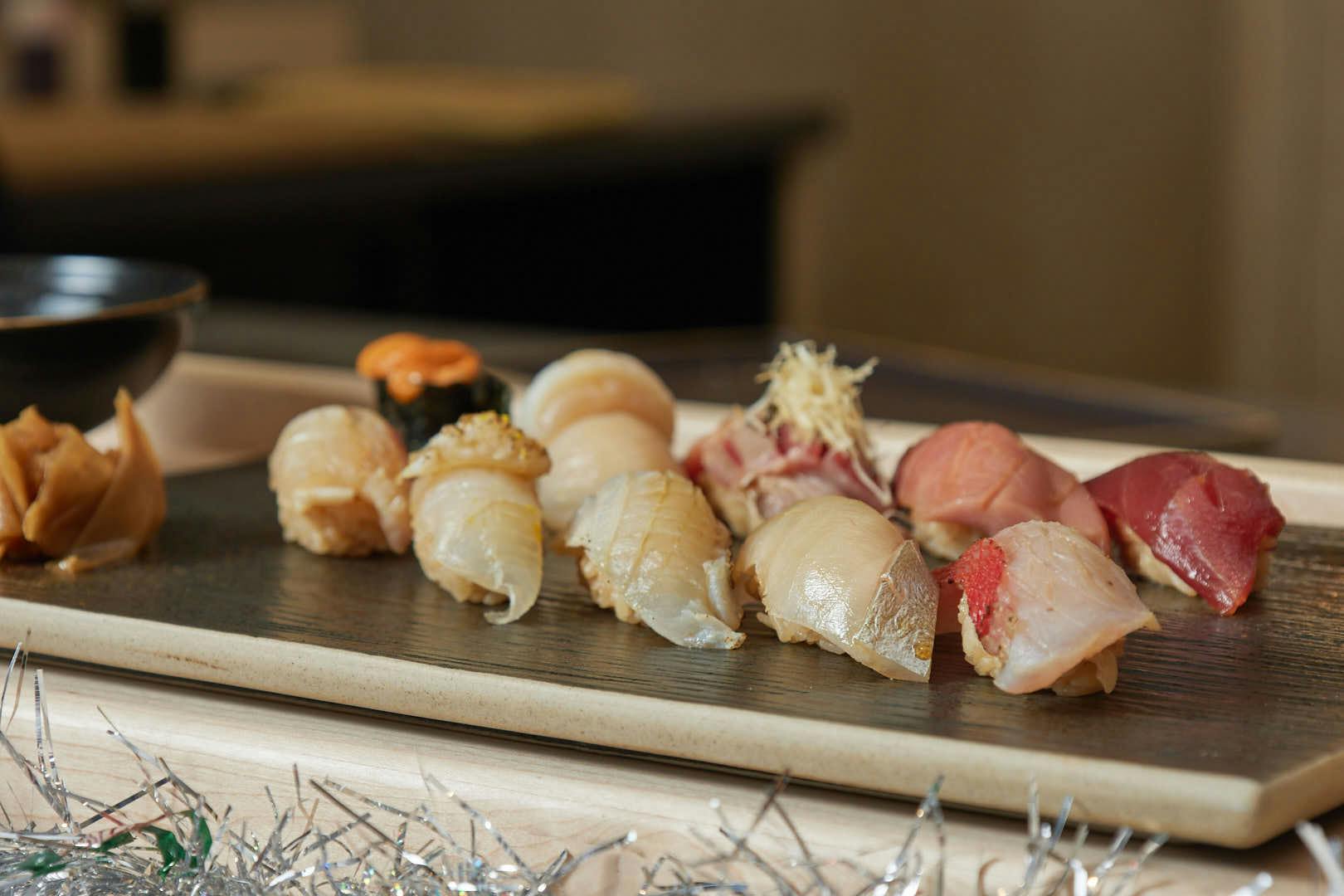
Recognizable by it pinky-coral flesh is akagai, ark shell or red clam. Bathed in vinegar, then butterflied and sliced, it’s wonderfully toothy and slightly sweet.
Fans of uni will rejoice to see the telltale deep saffron hue of these creamy sea urchin eggs (in actual fact, the urchins’ gonads), erupting from a cylinder of crisp rolled nori.
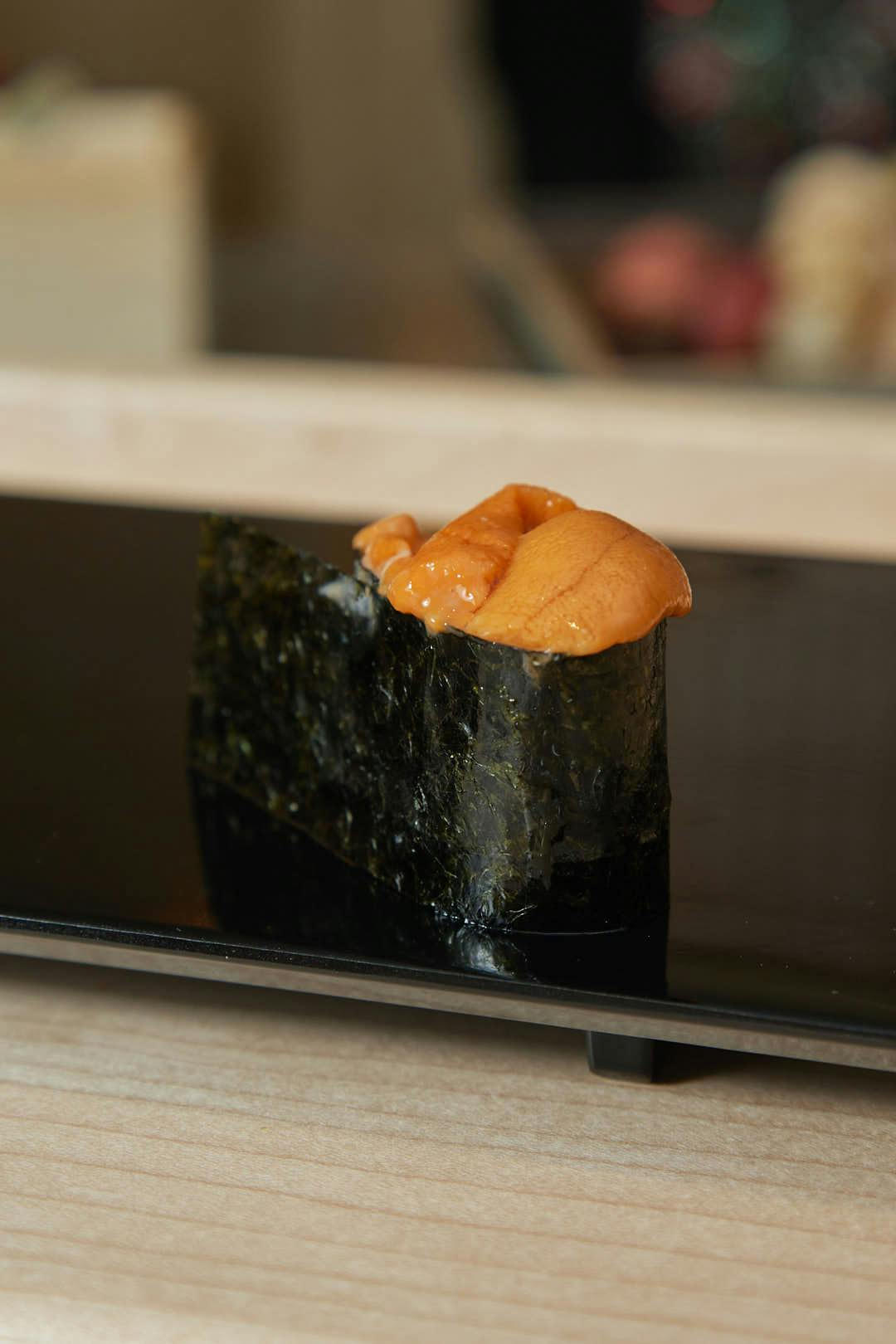
Pairing perfectly with all of the food is a selection of Japanese beers (Hitachino, Asahi, Sapporo) as well as more than two-dozen sakes. In addition to traditional Junmai, there are fresher and fruitier premium Junmai Ginjo sakes. There’s also an impressive list of ultra-premium, extremely soft and sophisticated tasting Junmai Daiginjo sakes, whose rice is milled to the max. Edging into cocktail territory are flavoured alcohols such as Yamayuzu (sake infused with yuzu) and Umesky whisky (infused with green plums and fermented sugar).
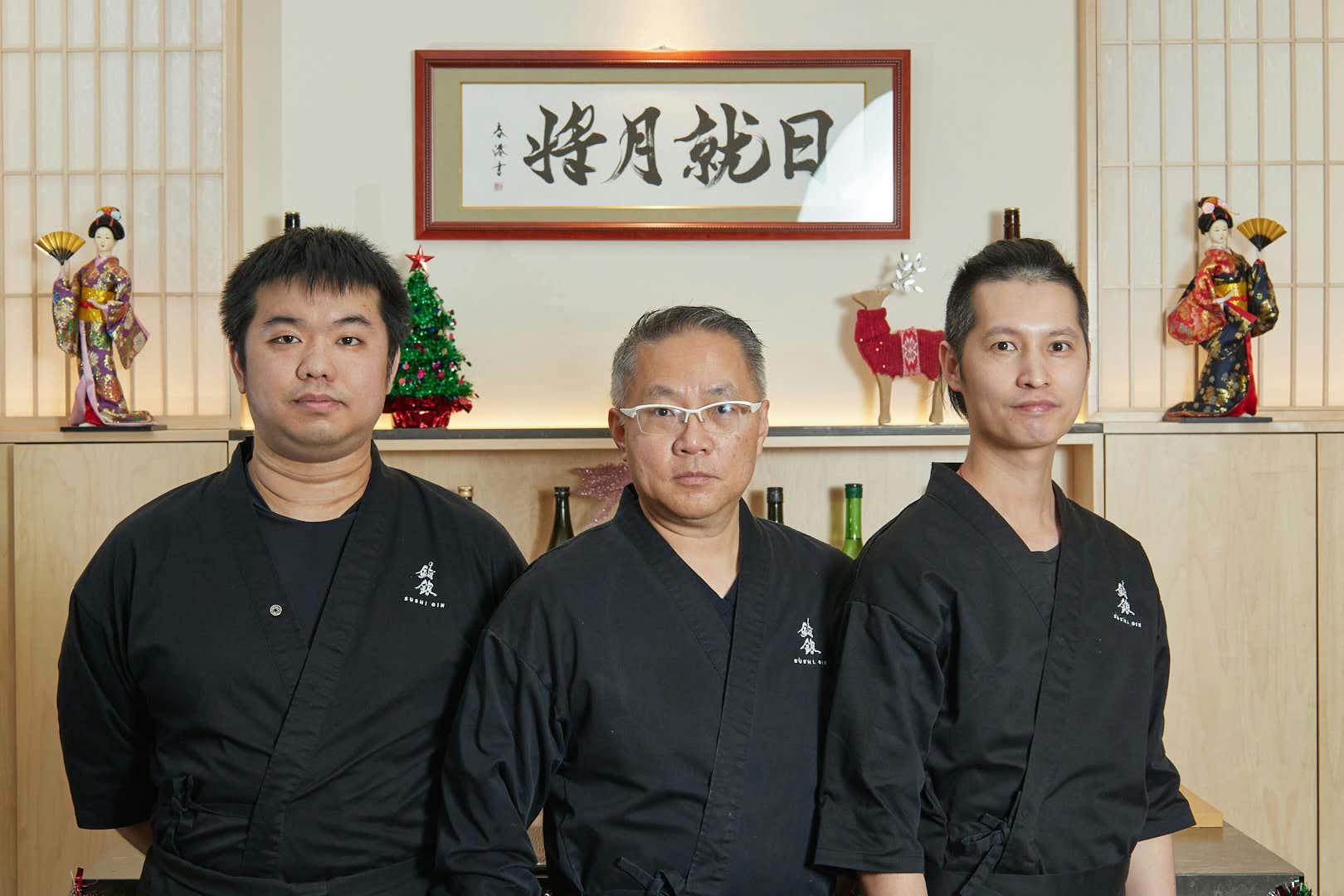
“In terms of technique and quality, at Sushi Gin we pay so much attention to making every small, individual piece as good as it can be,” confesses “P”. He notes that some of the fish, such as tuna, is aged in-house, following traditional methods that include wrapping and salting, sometimes up to two weeks, with the goal of exponentially enhancing natural flavours and textures. Even accompaniments such as soy sauce (artisanally-made and 100-percent natural) and rice (imported exclusively from a Japanese supplier) are given careful consideration.
“I won’t call it perfect because we have some limitations. Charging less than $200 for omakase limits our selection of fish and means that we focus more on quality than quantity.” admits “P”. “But we constantly strive to improve and, despite being respectful of tradition, we always look to do something a little different.”
Recommended For You